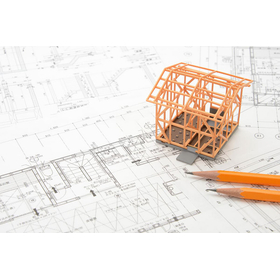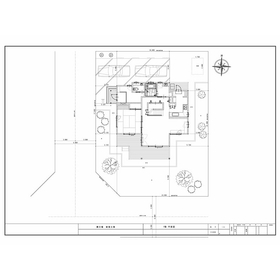- Publication year : 2025
1~5 item / All 5 items
Displayed results
Added to bookmarks
Bookmarks listBookmark has been removed
Bookmarks listYou can't add any more bookmarks
By registering as a member, you can increase the number of bookmarks you can save and organize them with labels.
Free membership registration
Contact this company
Contact Us Online1~5 item / All 5 items

Thank you for your continued support. We have an announcement from Arc System. We have updated the "Seki-san's Helpful Blog," where we post useful knowledge for everyone involved in construction cost estimation! This time, the theme is "Wooden Building Engineer." The qualifications for building engineers are divided into three types: "Wooden Building Engineer," "First-Class Building Engineer," and "Second-Class Building Engineer." Among these, the Wooden Building Engineer is a qualification specialized in the design of wooden structures. To obtain this qualification, one must meet the examination eligibility requirements and pass the national examination. This time, we will focus on the Wooden Building Engineer, providing a clear explanation of the qualifications, job overview, examination eligibility, pass rates (difficulty), and exam preparation. <Content of the post> What is a Wooden Building Engineer? Introduction to examination eligibility, pass rates (difficulty), and preparation - What is a Wooden Building Engineer? - What are the examination eligibility requirements and pass rates (difficulty) for Wooden Building Engineers? - Strategies for passing the Wooden Building Engineer examination - There are educational and experience requirements for the examination eligibility of the Wooden Building Engineer! Be fully prepared for the exam You can view it from the link below. We hope you will take a look!
Added to bookmarks
Bookmarks listBookmark has been removed
Bookmarks listYou can't add any more bookmarks
By registering as a member, you can increase the number of bookmarks you can save and organize them with labels.
Free membership registration
Thank you for your continued support. We have an announcement from Arc System. To everyone involved in the construction industry's estimation work, we have updated the "Seki-san's Helpful Blog," where we post useful knowledge! This time, the theme is about "cross-sectional drawings." Cross-sectional drawings play an important role in the design and construction of building projects. They contain necessary information to ensure compliance with building codes and to construct each floor and room according to the design, connecting them within the building. So, what specific information is included in cross-sectional drawings? This time, we will clearly explain the overview of cross-sectional drawings, how they differ from other drawings, how to write them, and key points to consider when creating them. <Content of the post> What is a cross-sectional drawing? A brief explanation of key points when writing - What is a cross-sectional drawing? A simple explanation! - Key points when creating a cross-sectional drawing - A brief introduction to the process of creating cross-sectional drawings - Cross-sectional drawings are diagrams to understand the relationship of building heights You can view it from the link below. Please take a look!
Added to bookmarks
Bookmarks listBookmark has been removed
Bookmarks listYou can't add any more bookmarks
By registering as a member, you can increase the number of bookmarks you can save and organize them with labels.
Free membership registration
Thank you for your continued support. This is a notification from Arc System. We have updated the "Seki-san's Helpful Blog," where we post useful knowledge for everyone involved in construction cost estimation! This time, the theme is about "frame diagrams." The design documents used in construction projects are mainly classified into four types: "structural drawings," "design drawings," "equipment drawings," and "site drawings." These drawings are further divided into several types, and construction projects are carried out based on each of these drawings. The frame diagram is one of the drawings included in the structural drawings. To understand the structure of a building, the frame diagram is essential. This time, we will focus on the frame diagram within the structural drawings and provide a clear explanation of what a frame diagram is, how to read it, and the types of other structural drawings. <Content of the post> What is a frame diagram? Introduction to how to read it and types of structural drawings - What is a frame diagram (jiku-gumi-zu)? - How to read a frame diagram - What other types of drawings are there besides the frame diagram? - Let's grasp the structure and framework correctly by understanding how to read the frame diagram. You can view it from the link below. Please take a look!
Added to bookmarks
Bookmarks listBookmark has been removed
Bookmarks listYou can't add any more bookmarks
By registering as a member, you can increase the number of bookmarks you can save and organize them with labels.
Free membership registration
Thank you for your continued support. This is a notice from Arc System. We have updated the "Seki-san's Helpful Blog," where we post useful knowledge for everyone involved in the construction industry's estimation work! This time, the theme is about "Professional Engineer in the Construction Sector." The construction industry requires advanced specialized knowledge and practical experience. There are many related national qualifications, and obtaining them requires technical skills and continuous learning. This time, we will focus on one of the important national qualifications in the construction industry, the "Professional Engineer in the Construction Sector," and we will explain the pass rate (difficulty), exam content, and effective strategies in an easy-to-understand manner for those who are challenging it for the first time. <Content of the post> What is the pass rate (difficulty) for the Professional Engineer in the Construction Sector? Exam content and strategies as well. - What is the Professional Engineer in the Construction Sector? - What is the pass rate (difficulty) for the Professional Engineer in the Construction Sector? - Exam content for the Professional Engineer in the Construction Sector - Strategies to pass the Professional Engineer in the Construction Sector - The exam difficulty for the Professional Engineer in the Construction Sector is high! Aim for success with planned study. You can view it from the link below. Please take a look!
Added to bookmarks
Bookmarks listBookmark has been removed
Bookmarks listYou can't add any more bookmarks
By registering as a member, you can increase the number of bookmarks you can save and organize them with labels.
Free membership registration
Thank you for your continued support. We have an announcement from Arc System. We have updated the "Seki-san's Helpful Blog," which provides useful knowledge for everyone involved in construction cost estimation! This time, the theme is about "Site Plans." Among the various drawings prepared when constructing a building, one of the most fundamental is the "Site Plan." In this post, we will not only provide an overview of the Site Plan but also explain how to read and write it in detail. We will also describe the typical symbols used, so please refer to it! <Content of the post> What is a Site Plan? Explanation of how to read and write it - What is a Site Plan? - How to read a Site Plan - How to write a Site Plan - A Site Plan is an important drawing at the design stage You can view it from the link below. Please take a moment to read it!
Added to bookmarks
Bookmarks listBookmark has been removed
Bookmarks listYou can't add any more bookmarks
By registering as a member, you can increase the number of bookmarks you can save and organize them with labels.
Free membership registration